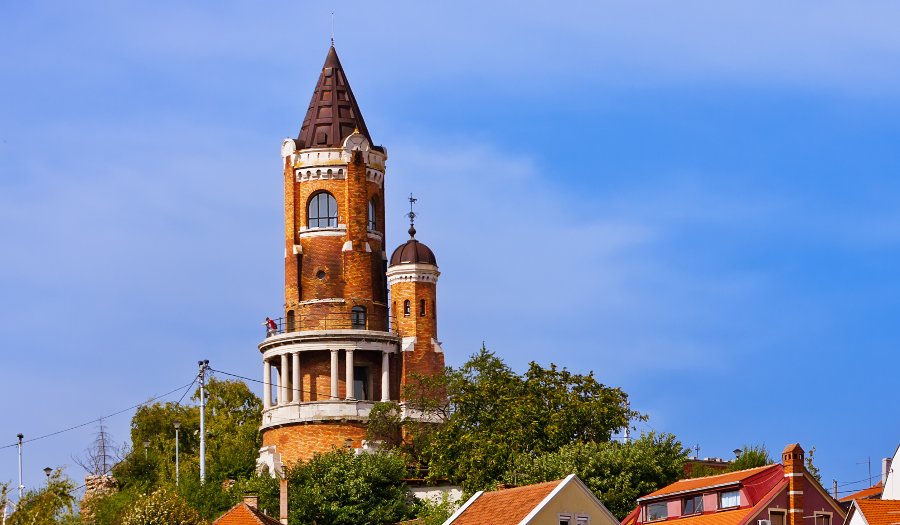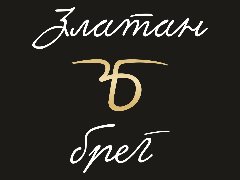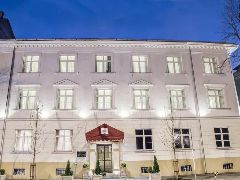
It was built in 1896 to mark 1,000 years Hungarians stays in Pannonia region. For the Millennium Tower, it can be freely said that to this day it causes an avalanche of blunders and doubts as to its name and origin. Many citizens of Belgrade, and mostly inhabitants of Zemun, call it completely wrong names (Gardos Tower, Zemun tower or Sibinjanin Janko Tower) and are related to the events that the tower does not represent at all.
Namely, the Millennium Tower is located on today's Gardos, which, along with Cukovac and Kalvarija, is one of the three elevations in Zemun, below which, in ancient times,in the plain there was a Roman settlement - Taurunum.
Also, this tower is located on the site where it used to be the Zemun fortress, whose remains of the ramparts can still be seen in the immediate vicinity of the tower. The Zemun fortress dates back to the early Middle Ages - written sources are mentioned in the 9th century. The Zemun fortress was first "perish" under the rush of the First Crusade at the end of the 11th century, and the destruction continued at the beginning of the 12th century in the Byzantine-Hungarian wars. The Ottomans destroyed the fort in 1397. Later the fortress was mentioned in 1609, and during the 18th century it was already in ruins.
In 1411, the Zemun was handed to the despot Stefan Lazarevic by Hungarian king Zhigmund Luxemburg, and in 1441 Zemun surrendered to Giorgi Brankovic. In 1456, Janos Hunjadi (named after Sibinjanin Janko) passed away from the consequences of the wounds sustained during the defense of Belgrade, and these historical facts are mistakenly referred to as the Sibinjanin JankoTower, even though from his death to the construction of the tower has passed 500 years old.
Today, from the former fortification of the Zemun fortress, only quadruple citadel (with a length of its sides about 45 meters) were preserved, in which the Millennium Tower was built in 1896.
It was built in 1896 to mark 1,000 years Hungarians stays in Pannonia region. For the Millennium Tower, it can be freely said that to this day it causes an avalanche of blunders and doubts as to its name and origin. Many citizens of Belgrade, and mostly inhabitants of Zemun, call it completely wrong names (Gardos Tower, Zemun tower or Sibinjanin Janko Tower) and are related to the events that the tower does not represent at all.
Namely, the Millennium Tower is located on today's Gardos, which, along with Cukovac and Kalvarija, is one of the three elevations in Zemun, below which, in ancient times,in the plain there was a Roman settlement - Taurunum.
Also, this tower is located on the site where it used to be the Zemun fortress, whose remains of the ramparts can still be seen in the immediate vicinity of the tower. The Zemun fortress dates back to the early Middle Ages - written sources are mentioned in the 9th century. The Zemun fortress was first "perish" under the rush of the First Crusade at the end of the 11th century, and the destruction continued at the beginning of the 12th century in the Byzantine-Hungarian wars. The Ottomans destroyed the fort in 1397. Later the fortress was mentioned in 1609, and during the 18th century it was already in ruins.
In 1411, the Zemun was handed to the despot Stefan Lazarevic by Hungarian king Zhigmund Luxemburg, and in 1441 Zemun surrendered to Giorgi Brankovic. In 1456, Janos Hunjadi (named after Sibinjanin Janko) passed away from the consequences of the wounds sustained during the defense of Belgrade, and these historical facts are mistakenly referred to as the Sibinjanin JankoTower, even though from his death to the construction of the tower has passed 500 years old.
Today, from the former fortification of the Zemun fortress, only quadruple citadel (with a length of its sides about 45 meters) were preserved, in which the Millennium Tower was built in 1896.















